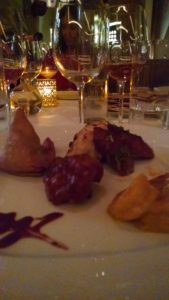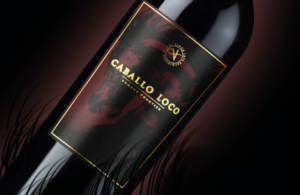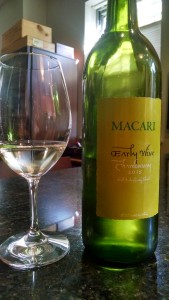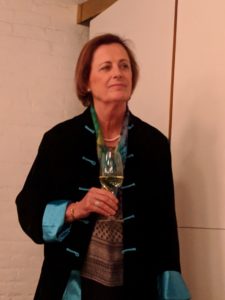 Two trailblazing women joined forces last week for a one-of-a-kind dinner featuring the incredible wines of Robert Mondavi Winery (produced under the direction of Chief Winemaker Genevieve Janssens) and the exquisite food of Chef Elise Kornack. Both women have distinguished themselves in their respective fields, earning well deserved and well-earned accolades and awards.
Two trailblazing women joined forces last week for a one-of-a-kind dinner featuring the incredible wines of Robert Mondavi Winery (produced under the direction of Chief Winemaker Genevieve Janssens) and the exquisite food of Chef Elise Kornack. Both women have distinguished themselves in their respective fields, earning well deserved and well-earned accolades and awards.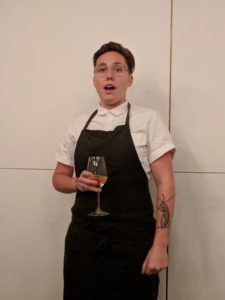
Marrying their individual expertise, Genevieve and Elise collaborated on an amazing menu that paired harmoniously with the wines. In speaking about the partnership, Elise explained that it had been a wonderful opportunity “to partner with someone who loves what she does as much as I do,” and noted that the experience working together had been quite fun, providing her with a different perspective as she considered the food in context with the wines.
Originally from France, Genevieve was born into a viticultural family and studied with many luminous wine professionals including Emile Peymaud, eventually earning a Diploma of Enology at the University of Bordeaux. News about the exciting things going on in the Napa Valley and, in particular, at Robert Mondavi Winery, inspired her to arrive on Mondavi’s doorstep in 1978. She was promptly hired as a lab technician by his Chief Enologist, Zelma Long, another pioneering woman in the industry. Although that initial post lasted only a year, Genevieve returned to work closely with Mondavi for several decades, including a ten-year stint at Opus One Winery, a joint venture between Mondavi and the Baron Philippe de Rothschild of Château Mouton Rothschild. During that time, she rose to the rank of Chief Winemaker for Robert Mondavi Winery. Among her numerous honors, Genevieve was named Wine Enthusiast‘s 2010 Winemaker of the Year and was recognized by the French government as an “Officier” of the The Ordre National du Mérite Agricole.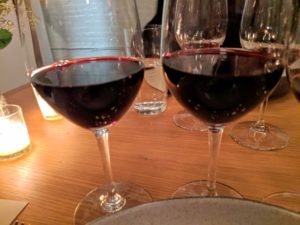
In keeping with Mondavi’s emphasis on food and wine pairing, the winery recently partnered with the James Beard Foundation to create a five-year scholarship for the advancement of wine education in the U.S. Accordingly, as a thrice nominated James Beard “Rising Star Chef,” it was especially fitting for Elise to have been chosen as Chef for the dinner event. Previously, Elise created the Michelin-starred restaurant Take Root in Brooklyn, which she ran from 2013-2017. Recognized as one of Conde Nast’s “10 Young Chefs to Watch,” among her lengthy list of superlatives; last year, Elise and her wife moved to the Catskills region in upstate New York, where she is at work on a new restaurant in Phoenicia. (As a part-time resident of Saugerties, NY, I am eagerly anticipating its opening.)
As she spoke about her approach to food, Elise shared her preference for humble ingredients, varied textures, earthy flavors and notes of nostalgia, as we head into the fall and winter seasons. But, while her palate colors and flavors might be “humble,” – starring such vegetables as rutabaga, celery and turnips – she elevates them to high art on the plate.
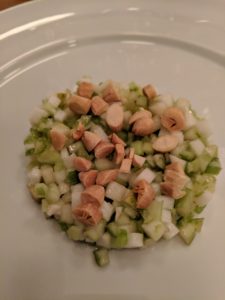 The meal opened with a dish comprised of celery, turnip and pear with ginger, almond and sheep’s milk cheese, served alongside the 2016 Robert Mondavi Winery Chardonnay Reserve, Carneros, CA, Napa Valley. The crunchy texture of the vegetables balanced well with the creaminess of the cheese, while the acidity of the wine provided a lovely counterpoint, along with the interplay of the slight woody notes of the wine with the ginger and almond on the plate.
The meal opened with a dish comprised of celery, turnip and pear with ginger, almond and sheep’s milk cheese, served alongside the 2016 Robert Mondavi Winery Chardonnay Reserve, Carneros, CA, Napa Valley. The crunchy texture of the vegetables balanced well with the creaminess of the cheese, while the acidity of the wine provided a lovely counterpoint, along with the interplay of the slight woody notes of the wine with the ginger and almond on the plate.
 The second course featured beluga lentils and wild mushrooms with cranberry, coffee and truffle, presented with the 2015 Robert Mondavi Winery Cabernet Franc, Oakville, Napa Valley and 2014 Cabernet Sauvignon, Oakville, Napa Valley. I especially enjoyed the herbaceous character of the Cabernet Franc with the rich, earthy flavors of the mushrooms and truffles as well as the echoed notes of fruitiness between the wine and cranberry.
The second course featured beluga lentils and wild mushrooms with cranberry, coffee and truffle, presented with the 2015 Robert Mondavi Winery Cabernet Franc, Oakville, Napa Valley and 2014 Cabernet Sauvignon, Oakville, Napa Valley. I especially enjoyed the herbaceous character of the Cabernet Franc with the rich, earthy flavors of the mushrooms and truffles as well as the echoed notes of fruitiness between the wine and cranberry.
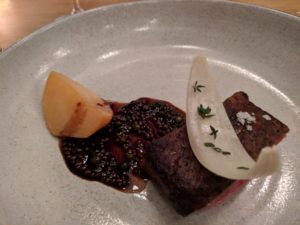 The third plate brought together New York strip, rutabaga and a sauce of smoked corn, peppercorn and mustard seed, paired with a duo of Robert Mondavi Winery Cabernet Sauvignons: 2015 The Reserve To Kalon Vineyard, Oakville, Napa Valley and 2008 Cabernet Sauvignon Reserve Napa Valley. Genevieve explained that 2015 had been a drought year, yielding highly concentrated wines, with firm tannins, yet a softness as well. In this regard, the wine was a perfect example of Mondavi’s philosophy to, “Make Cabernet Sauvignon as soft as a baby’s bottom and powerful as Pavarotti.” While both wines were absolutely beautiful, I favored the 2008 for its development and tertiary aromas, though still quite fresh at ten years old.
The third plate brought together New York strip, rutabaga and a sauce of smoked corn, peppercorn and mustard seed, paired with a duo of Robert Mondavi Winery Cabernet Sauvignons: 2015 The Reserve To Kalon Vineyard, Oakville, Napa Valley and 2008 Cabernet Sauvignon Reserve Napa Valley. Genevieve explained that 2015 had been a drought year, yielding highly concentrated wines, with firm tannins, yet a softness as well. In this regard, the wine was a perfect example of Mondavi’s philosophy to, “Make Cabernet Sauvignon as soft as a baby’s bottom and powerful as Pavarotti.” While both wines were absolutely beautiful, I favored the 2008 for its development and tertiary aromas, though still quite fresh at ten years old.
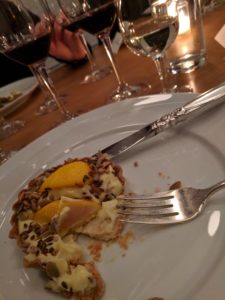 Noting that she was a big fan of cream pies, the meal concluded with Elise’s riff on one that included apple and fig leaf with seeds, tumeric and honey, served with the 2017 Robert Mondavi Winery Moscato d’Oro, Napa Valley. The pie was creamy, yet light, and was well matched with the acidity and sweetness of the dessert wine.
Noting that she was a big fan of cream pies, the meal concluded with Elise’s riff on one that included apple and fig leaf with seeds, tumeric and honey, served with the 2017 Robert Mondavi Winery Moscato d’Oro, Napa Valley. The pie was creamy, yet light, and was well matched with the acidity and sweetness of the dessert wine.
During the reception, we had the opportunity to taste the Fumé Blanc (aka Sauvignon Blanc) Reserve 2016 To Kalon Vineyard, Napa Valley. This wine, along with the 2015 Cab Sav we tasted, hail from the famed To Kalon vineyard, which is Greek for beautiful. First planted (and named) in the late 1800s by Hamilton Walker Crabb, an early Napa pioneer, the vineyard was initially re-established by Mondavi on a 12-acre site. Today, the historic property, known for its optimum conditions, now comprises 550 acres, with 435 under Mondavi’s ownership.
As the evening winded down, it was clear that the food and wine had been impeccable, made more so not only by the intentional collaboration between Genevieve and Elise, but also by the collegial atmosphere in which they had been served; an experience that will not be easily matched.

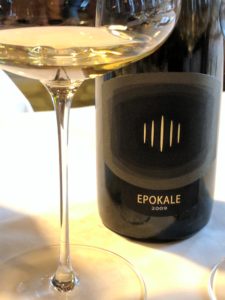
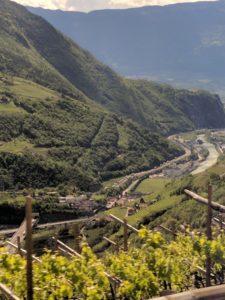
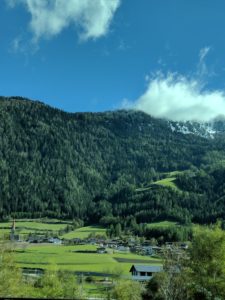
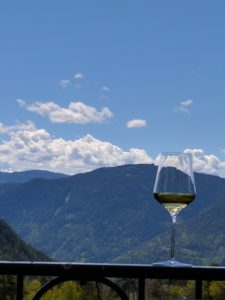

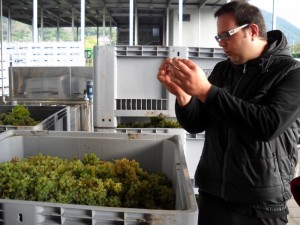

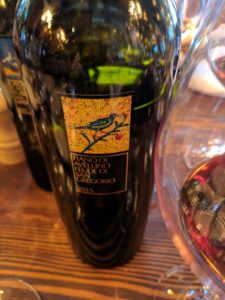
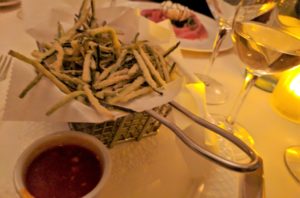
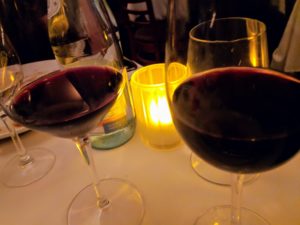
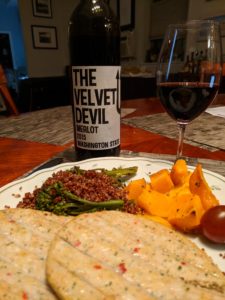
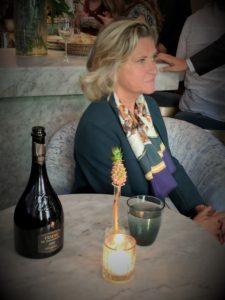
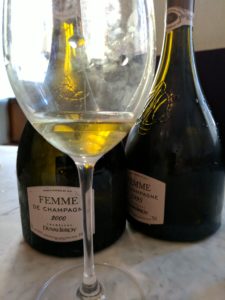
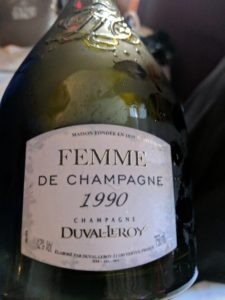
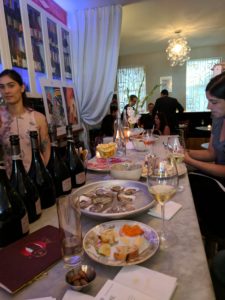
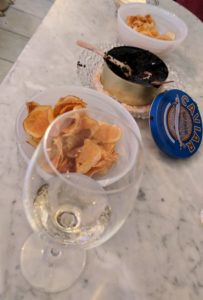
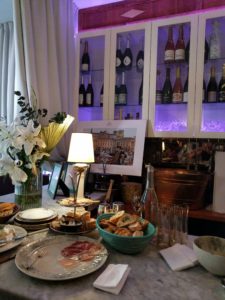

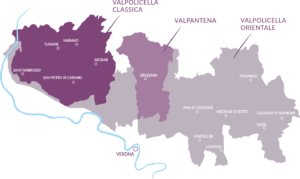
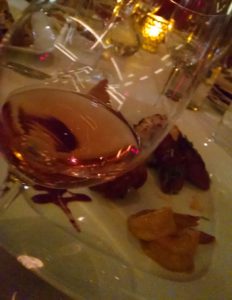 Régis Camus,
Régis Camus, 